Arantxa Rus vs Gina Feistel: The Hague Final Analysis (ITF W75)
Unforced errors, run-around forehands and game point conversion among the key factors as Rus increased her all-time ITF World Tour record to 33 titles
cover 📸 credit: BICT Groep instagram
Top-seed Arantxa Rus (WTA #56) increased her all-time ITF World Tour record to 33 titles with a triumphant return to The Hague. A result that reversed last year’s runner-up finish and added to her 2019 victory in the Dutch city, when it was a W40 and a W25 event, respectively.
In this year’s final, Rus defeated qualifier Gina Feistel (WTA #488), who entered the contest on an 11-match winning streak and bidding for a second successive title after her triumph at W35 Klosters.
The match, played under windy conditions, had a fairly uneven start. While Feistel laboured through 12 points in each of her first 2 serve games, Rus conceded a single point on serve in the whole set. During the opener, Feistel accumulated 17 unforced errors, almost 3-times more than Rus’s total of 6, so it was no surprise that Rus claimed it by a 6-1 score.
Once the second set began, everything changed. From 40/0 up, Rus made 4 consecutive unforced errors that left her facing a first break point. Even tough Rus saved it and held, she continued to leak unforced errors (19 at the end of the set), losing serve in her next serve game and again at 4-4. Unable to consolidate an initial advantage, Feistel did better when serving out the set at 5-4.
By the start of the decider, Rus was showing signs of leg discomfort. As a result, she was more aggressive, trying to shorten points, until taking a medical time-out at the first changeover. Shortly after, the pivotal moment of the match arrived. At 2-2, Rus served a 12-minute, 20-point game. It finally ended on Rus’s 5th game point, but only after she saved 3 break points. In the very next game, Feistel was up 40/30 but Rus won a trio of consecutive 10-shot rallies to grab the definitive advantage. With a 4-2 lead, Rus closed the match by prevailing in 2 more Deuce games, bringing joy to the home crowd.
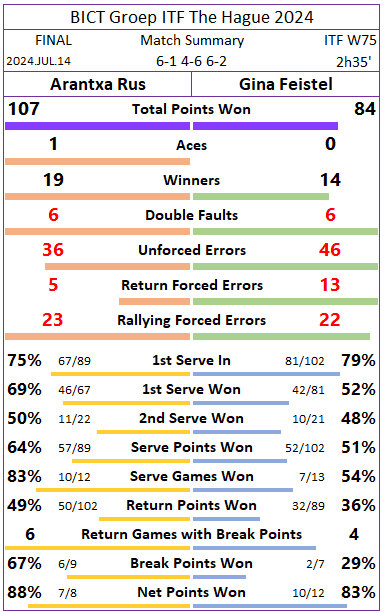
1. Unforced errors
Each set was won by the player who better controlled unforced errors.
Rus took sets 1 and 3 by making 11 and 7 less unforced errors, respectively.
In set 2, Feistel reduced her unforced errors to 11 (averaged 17 in the other sets), and pounced on Rus’s sudden rise in unforced errors.
Unforced Errors per Set
Set 1: Rus 6 / Feistel 17
Set 2: Rus 19 / Feistel 11
Set 3: Rus 11 / Feistel 18
Winners-to-unforced errors differentials per set point to Rus’s level drop in set 2 as the outlier. Otherwise, Feistel hovered around a -10 differential throughout the match while Rus was close to 0 in both sets she won.
Winners-to-Unforced Errors per Set
Set 1: Rus 0 / Feistel -10
Set 2: Rus -14 / Feistel -9
Set 3: Rus -3 / Feistel -13
2. Forehand performance
Rus enjoyed a superior forehand performance and that was the difference in the match.
From the forehand side, Feistel accumulated 53 errors. Rus made 20 less forehand errors while hitting 1 more forehand winner.
Forehand Performance
Rus: 14 winners / 33 errors = -19
Feistel: 13 winners / 53 errors = -40
Backhand Performance
Rus: 5 winners / 31 errors = -26
Feistel: 1 winner / 28 errors = -27
3. Run-around Forehands
Both players were very active in upgrading to run-around forehands instead of hitting backhands. However, they yielded very different results.
In combined inside-in and inside-out forehands, Rus accumulated 12 winning shots to 3 unforced errors (marked by blue box).
Feistel was less efficient, making 15 unforced errors while striking 11 winning run-around forehands (marked by green box).
4. Rally Length
Rus built a 16-point advantage in points decided within the first 4 shots (52-36). Most of the difference originated from return and “serve+1” errors.
Return errors: Rus 10 / Feistel 18
“Serve+1” errors: Rus 6 / Feistel 11
In addition, Rus finished with an 8-point edge (23-15) in rallies lasting 9 or more shots.
5. Game points
Out of 25 games played, 12 reached Deuce and another 7 ended at 30. With so many close games, converting game points was key.
Rus converted 16 of 31 game points, for a 52% win-rate. Feistel did a lot worse, converting only 9 of 28 chances (32%).
While Feistel matched Rus in set 2, with both players taking half of their game points, she had win-rates of 14% and 22% in the sets she lost.
Game points
Rus
Set 1: 6-for-9 (67%)
Set 2: 4-for-8 (50%)
Set 3: 6-for-14 (42%)
Total: 16-for-31 (52%)
Feistel
Set 1: 1-for-7 (14%)
Set 2: 6-for-12 (50%)
Set 3: 2-for-9 (22%)
Total: 9-for-28 (32%)
Arantxa Rus (WTA #56, seed 1) vs Gina Feistel (WTA #488, Q)
2024 The Hague Final - Match Data
Set by Set Stats
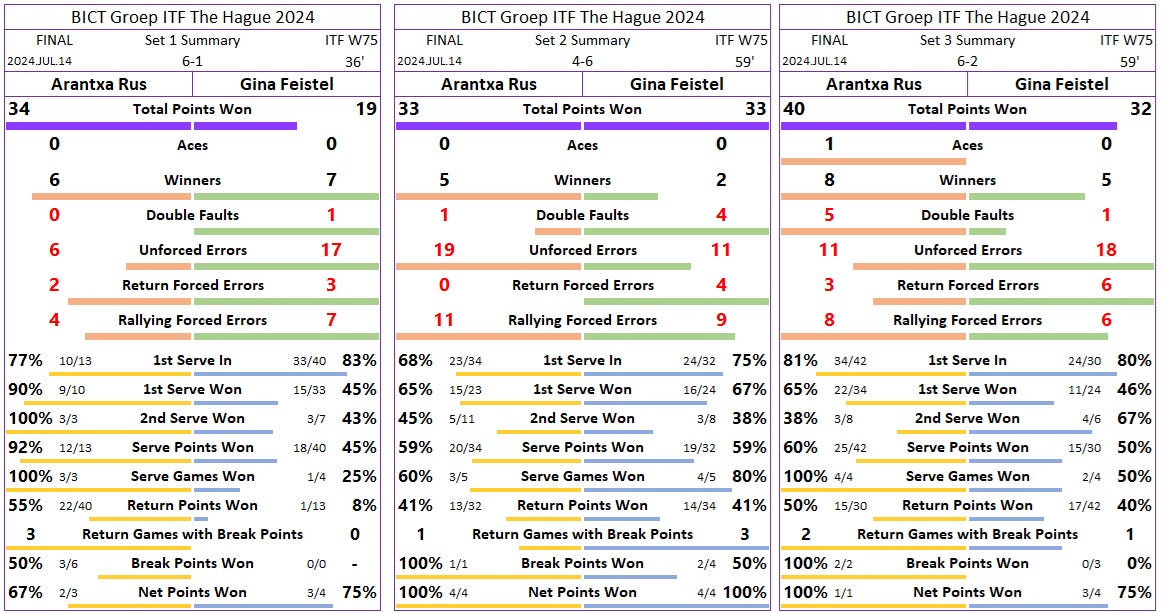
Strategy Stats
Strokes Breakdown
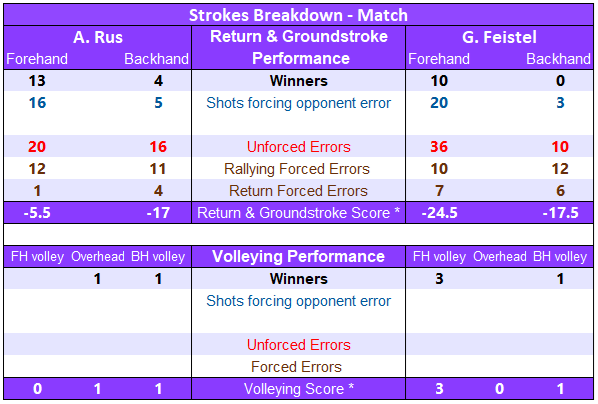
Direction of winning shots and unforced errors (only groundstrokes)
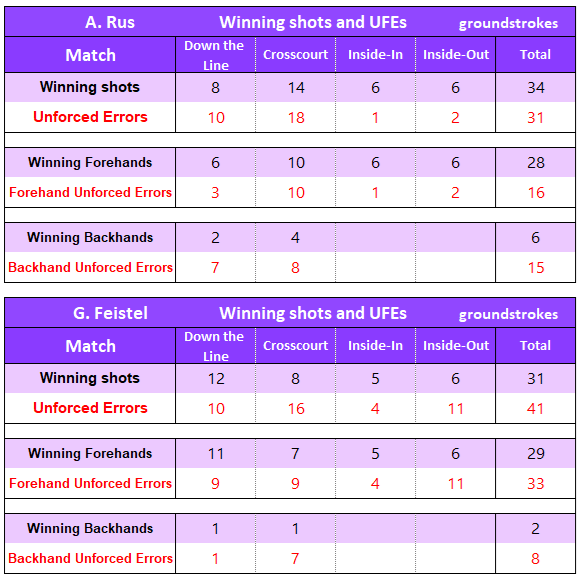
Serve and Return
1st Serves
2nd Serves
Return & rallying performance
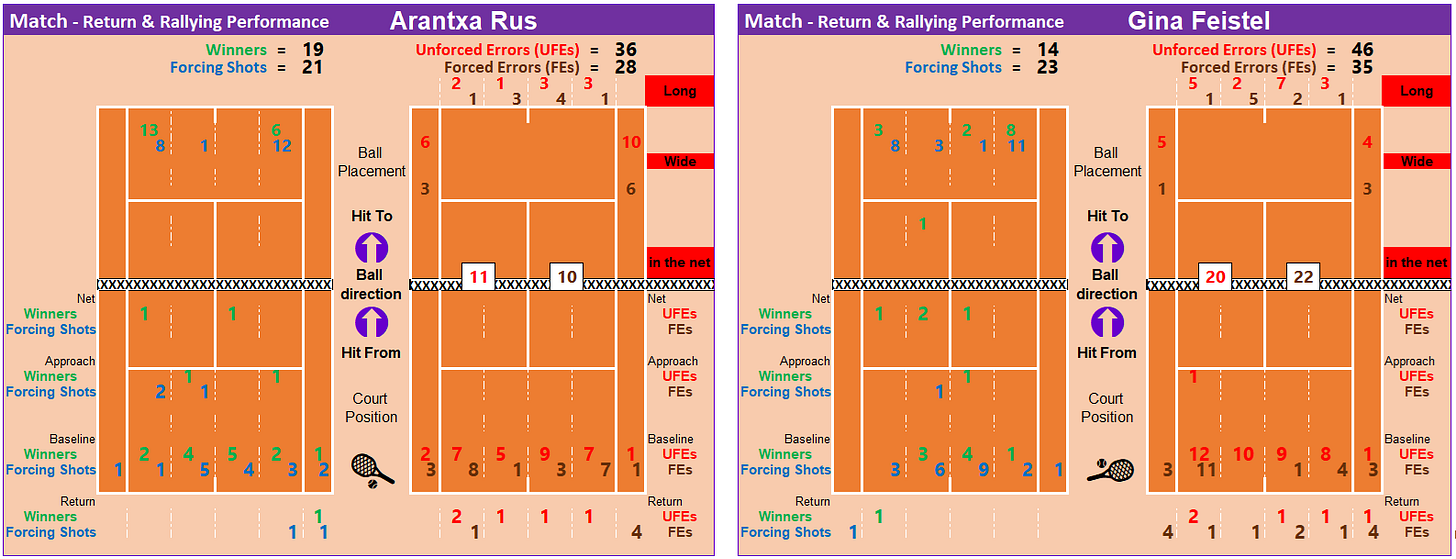
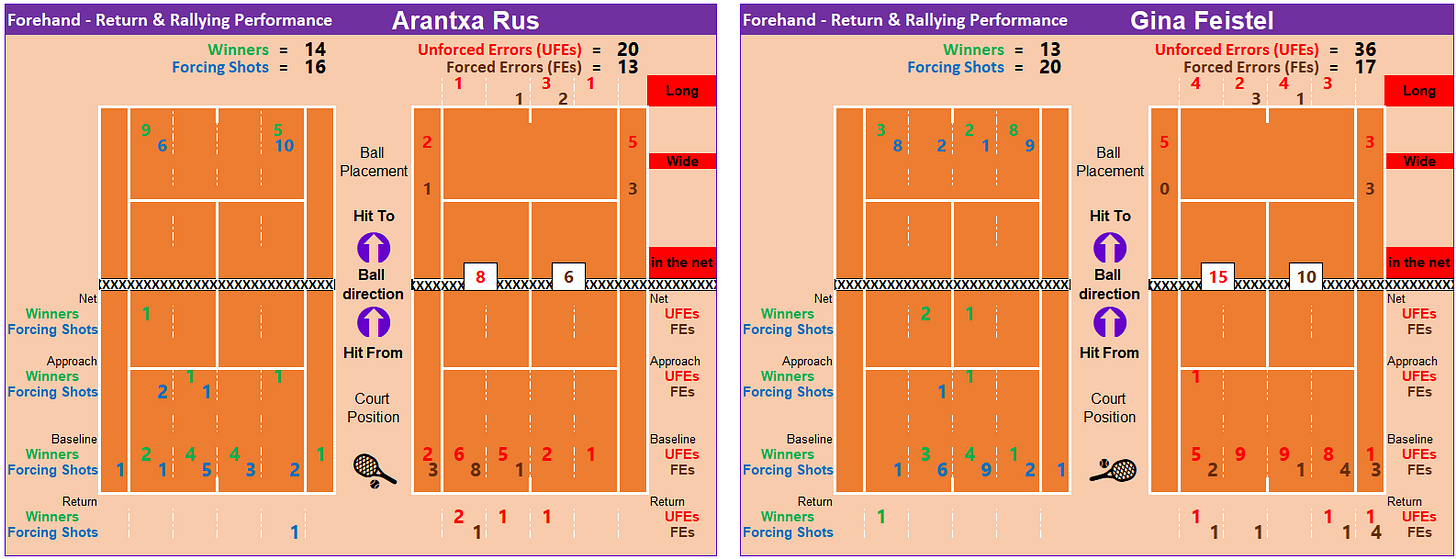
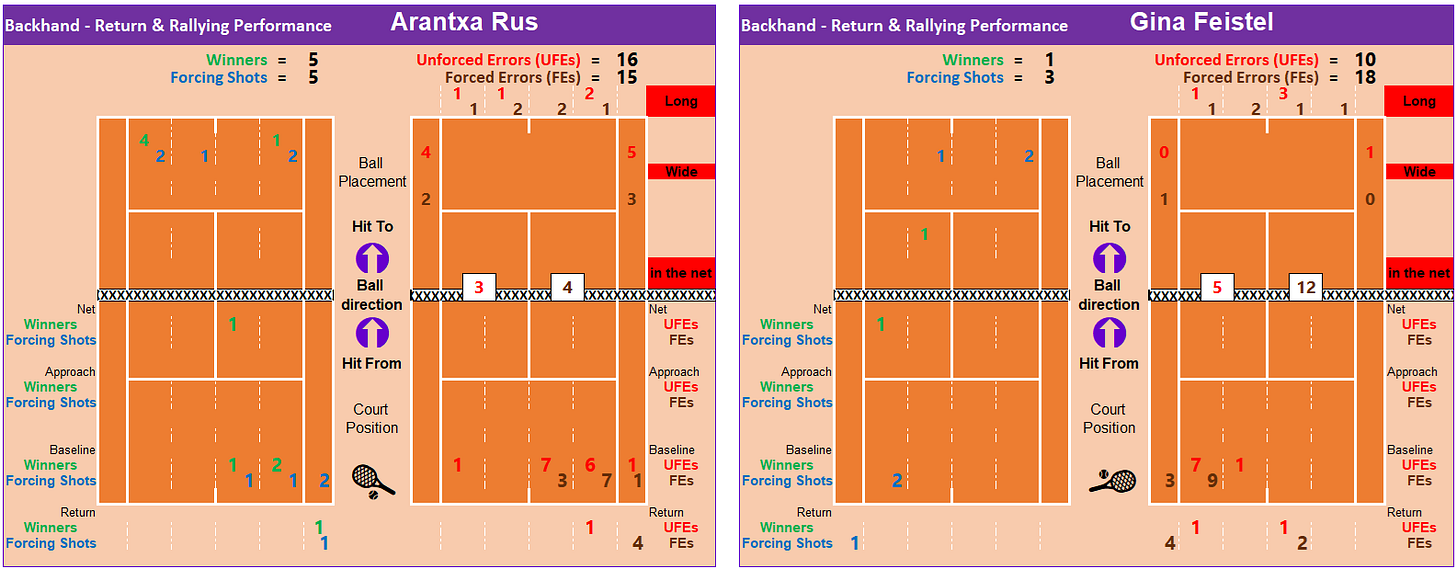
Rally Length
Points won breakdown
This final section gives a last, broader look at the match by presenting how each player won points. Points are listed according to their frequency (highest to lowest) and are named in relation to the last touch on the ball. For simplicity, groundstrokes hit from the 5th shot onwards are grouped together.
Breakdown by side (FHs or BHs)
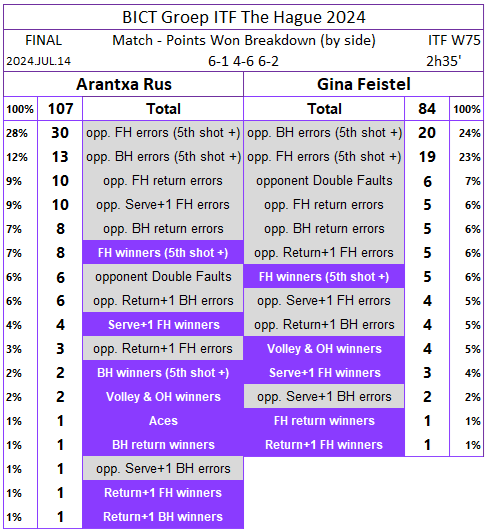
Breakdown by error type (UFEs or FEs)
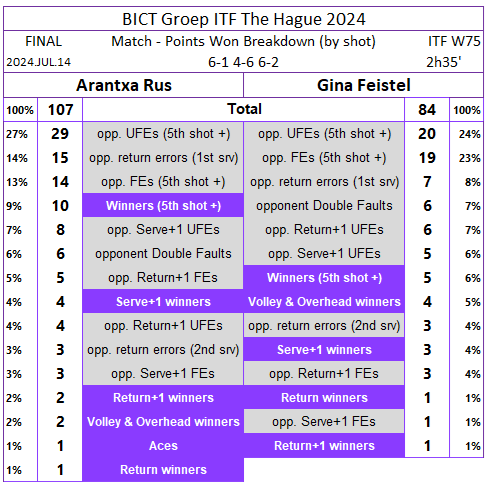
To find out more about the stats published here, please visit the following post.
Even though they follow the same criteria used on all major tennis events, they are not official WTA or ITF stats. They are collected through our own rigorous video analysis.
Thanks for reading!
— Tennis Inside Numbers











